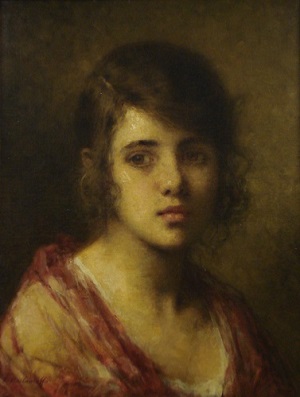
In the 1860s and 70s, a new generation of Russian artists ventured to Paris, joining classes at the École des Beaux-Arts, studying with respected masters, and exhibiting works at the Paris Salon. Studying in Paris offered these artists the chance to refine their technical skills and explore subjects underrepresented in Russian art. At that time, a new movement centered on a group of artists known as the Wanderers (Peredvizhniki) introduced bold themes into Russian art. In 1863, this group of 14 students quit the Imperial Academy in protest of its strict adherence to Neoclassical techniques and themes, and began painting Realist images of contemporary Russia. For many artists, trained at the Imperial Academy but mentored by the Wanderers, studying in Paris gave them the chance to explore subjects and issues outside of this atmosphere.
For Vasily Vereshchagin (1842–1904), moving to Paris in 1864 was a means to refine his technical grasp of painting and engage with France’s thriving school of Orientalist art. Vereshchagin pursued both of these threads while studying at the École des Beaux-Arts under Jéan-Léon Gérôme (1824–1904), perhaps the best known Orientalist painter in France at the time. Vereshchagin studied with Gérôme intermittently for three years, and they remained in contact for life––Vereshchagin later lent Gérôme props for his bronze sculpture Tamerlane (1898, Private Collection). Though there are striking differences between Gérôme and Vereshchagin, many of their works show interesting thematic and technical affinities––see for instance Gérôme’s Slave Market (1866, Clark Art Institute) and Vereshchagin’s Selling a Slave Boy (1872, Tretyakov Gallery).
Ilya Repin (1844–1930) moved to France in 1873 using the scholarship he had been awarded after winning the Imperial Academy’s gold medal for his painting on the subject of The Raising of Jairus’s Daughter (1871, Russian State Museum). Though Repin was a darling of both the Academy and the Wanderers, in Paris he became interested in Impressionism and scenes of daily life––much to the chagrin of his mentors. Asserting his independence, Repin painted a portrait of his wife “à la Manet” (1876, The State Russian Museum), a plein air scene in Normandy, Horse for Collecting Stones (1874, Radishchev Art Museum), and also exhibited a scene of French modern life, A Parisian Café, at the Salon of 1875 (Private Collection). Unfortunately Russian critics panned the latter work, and after Repin returned home in 1876 he resumed painting Academic and Peredvizhnik works.
Like Repin, Alexei Harlamoff (1840–1925) won a gold medal at the Imperial Academy in 1868, which enabled him to travel to Paris, where he resettled and enjoyed a successful career. Harlamoff studied with Léon Bonnat (1833–1922), as many Russian and other foreign artists did, and many of his works depict a theme popular with his master, charming portraits of peasant girls. Subjects like Harlamoff’s A Young Beauty (1997.23) had become popular with French artists because they sold well––William-Adolphe Bouguereau (1825–1905) was a prime example of this success. However, Harlamoff’s works failed to appeal to his fellow Russians; Repin criticized Harlamoff for painting “practically like a born Frenchman.”
Painters like Harlamoff, Repin, and Vereshchagin represent some of the better known artists who studied in Paris during the 1860s and 70s, but there were many others. Russia’s artistic connections with France also persisted after this vibrant period, reaching something of apogee at the beginning of the 20th century, when the aesthete Sergei Diaghilev organized the Ballets Russes as well as the first major exhibition of Russian art in France (1906) at the Petite Palais.


